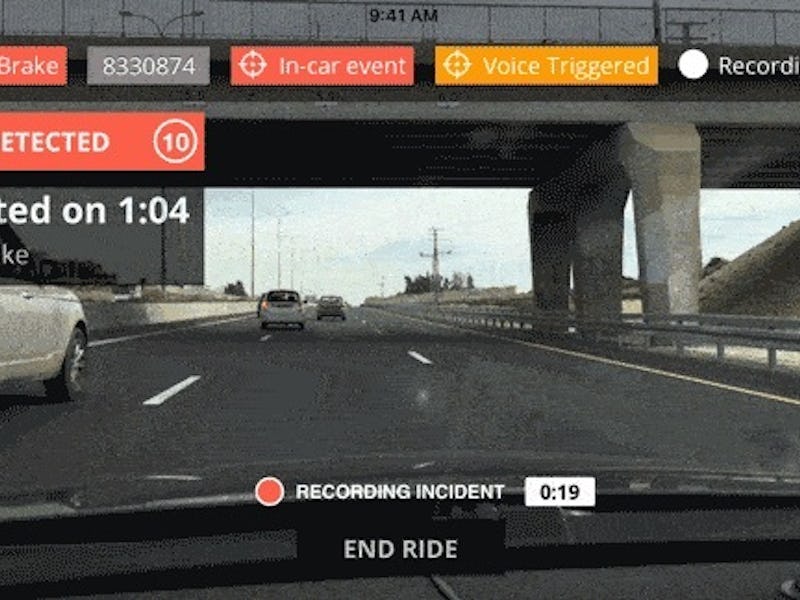Nexar Dashcam App Brings Autonomous Intelligence to Manual Driving
An app doesn't forget.

We all know that someday cars will drive themselves, and we won’t have to worry about total idiots cutting us off and sending us to our deaths. Unfortunately, that day remains in the future, and if we want to survive the harsh realities of the road, we are going to have to adapt. Nexar, a new app that functions as a perceptive dashcam, is trying to bring the intelligence of autonomous driving programs to our current person-driven cars, giving us the ability to understand and react to dangerous situations before it is too late.
The app works by analyzing and categorizing every driver it sees. It compiles reports of bad drivers and dangerous intersections to provide warnings when it deems necessary. Whether it’s a driver known for cutting people off or a pothole the size of the Big Dig, the app learns from the experience of other drivers running the program and is able to issue advance warnings. It’s true that the app reads and records the license plates of every driver as they pass, but all in the name of driver safety, so it’s not too weird, right?
Right now, the app is best at analyzing situations on the road and providing quicker warning about events like hard brakes. But the app’s designers do imagine that soon enough in certain markets, it will be able to provide live driver assessments based on previously recorded information. With just 1 percent of drivers in a big city running Nexar, the app would view every registered driver in the area in just about a month. If you’re a frequent driver in Silicon Valley or New York, odds are that a driver running the app has already caught you on their camera.
But don’t fret. Nexar insists they are not interested in helping local law enforcement jack up their ticket revenue. The company argues that the app gives good drivers strong proof of their innocence in the case of accidents, helping to convince insurances companies not to raise their rates. It also imagines that the technology will encourage insurance companies to offer discounts to drivers who have good Nexar ratings. As for any legal issues regarding the new technology, Nexar’s co-founder Eran Shir seems largely unconcerned.
“There aren’t a lot of legal impediments in the United States to what Nexar is doing, nor should there be.” Shir told the IEEE Spectrum. “If you’re driving next to me and you’re a dangerous driver, I want to know about it so I can be prepared.”
“Courts generally say that people generally have little or no expectation of privacy in the movements of their cars on public roads, as long as cars aren’t being tracked everywhere they go for a lengthy period of time,” Shir added.
The app would also create a network that connects cars on the road that would otherwise have no way of communicating. If a car running Nexar sees a speeding car cut in front of them, the app can warn drivers further up the road that the deviant is heading right toward them. Auto manufacturers and insurance companies, not to mention drivers themselves, have long dreamed of this kind of warning system, and plans to install sensors in vehicles that would provide dedicated short range communications (DSRC) are currently in the works.
Shir and Nexar’s leadership though believes their app will kill such a cash and hardware intensive proposal.
“DSRC is dead in the water,” Shir said. “Instead of sharing information about a single vehicle, where you need a density [of equipped vehicles] of 10 to 20 percent to become effective, you can share the information of all the vehicles around you, and start with 1 percent. It’s a massive force multiplier.”
Not only that, it’s a brain multiplier too. Instead of driving alone, all Nexar drivers are linked and helping one another make it on the wild roads. The app is launching in 10 new cities in the coming weeks, including San Diego; Washington, D.C.; Chicago; and Seattle, so if you’re on the list, it might be worth giving a shot.